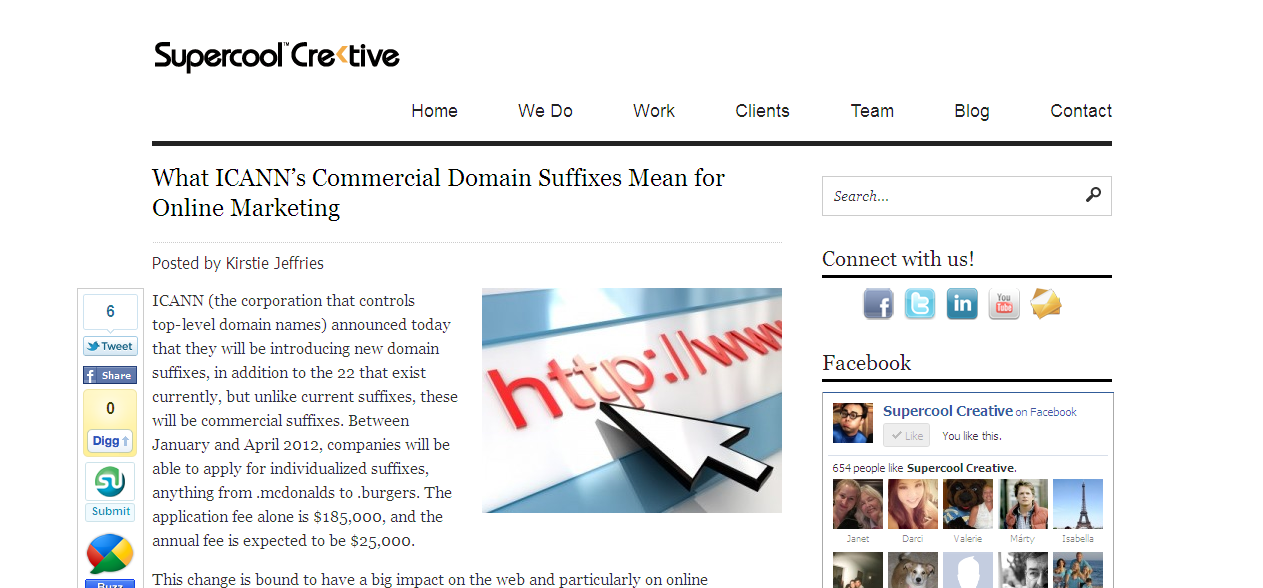Facebook Ads can massively boost qualified traffic and conversions—for some. Before dumping all your budget into Facebook, it’s wise to consider whether your company is a good fit for the popular advertising platform. In my post for former New Zealand marketing agency Ad Infinitum, I discuss whether Facebook Ads are ideal for your business and provide a few alternatives.
Facebook advertising is a major element of many businesses’ marketing strategies, often with fantastic results. But should your business be using Facebook ads? Ask yourself the following questions to determine if an advertising campaign on the world’s most popular social network is the best choice for your business.
What size is your business?
Facebook ads work for a wide range of advertising budgets: you can spend as little as $1 per day on a campaign. The platform is also easy enough to use that you won’t need to hire a highly experienced specialist to run a successful campaign. These two factors make Facebook a great choice for small businesses.
Facebook’s large number of users, sophisticated targeting features, and ease of bulk-editing campaigns, however, mean it’s also a fantastic platform for large corporations…as well as anything in between.
In short, Facebook advertising can work for any size of business, although different companies should rely on distinct sets of features and tools.
Which demographics are you targeting?
Facebook’s 1.32 billion daily active users make it the largest social network in the world, so there’s a decent chance your customers can be reached through it.
44% of those 1.32 billion worldwide users are women and 56% are men. 32% are aged 18-24, 32% 25-34, 17% 35-44, 10% 45-54, 6% 55-64, and 4% over 65 (Facebook doesn’t report data about users under 18). Additionally, 68% of users 18 and over have completed university, while 26% stopped at a high school degree, and 6% claim a graduate degree.
As the numbers show, no matter your target demographic, you’ll find massive reach on Facebook. However, when you’re deciding whether a very specific audience has the right Facebook numbers for you, make use of the Audience Insights tool. There, you’ll be able to build a hypothetical audience by selecting criteria like age, location, interests, behaviours, education levels, life events, and more and then determine the number of Facebook users that match that description and view their demographic breakdown.
While Facebook has a reputation for being increasingly less “cool” among young internet users, a 2017 study found that 66% of U.S. 13-17 year olds still use Facebook. Instagram was the most popular social network for this age group, with 76% using it, and Snapchat came in second with 75%.
If your business is looking to target teens with your ads, Facebook may still be a good option, although the percentage of teenage users dropped from 71% to 66% from 2015 to 2017, so you should also consider utilising Instagram and Snapchat. As Instagram is owned by Facebook, ads on that platform can be created and managed directly through Facebook’s Ads Manager and Power Editor.
Are your competitors using Facebook?
One of the best ways to determine where you should focus your social advertising budget is by seeing what your competitors are doing. Are they utilising Facebook? Skim their Facebook page and check out their audience size and engagement levels. Observe what type of content they publish and how frequently they do so. To keep an eye on your competitors’ page growth, under the Insights tab of your page, you’ll find a “Pages to Watch” section. Take some inspiration from what your competitors are doing, but go above and beyond to outshine them.
Also pay attention to your competitors’ presences on other social networks. Social listening tools will enable you to track their metrics like social shares and mentions per platform. While this will give you more insight into their organic marketing than their paid social advertising, assessing where your competitors’ customers are most active and engaged can help you determine where your advertising budget should be spent.
Is there a better alternative for social advertising?
Wondering if you should be focusing your advertising budget on a different social network? Here is a breakdown of your advertising options on the most popular social media platforms.
Pros: Instagram advertising is managed through Facebook’s Ads Manager and Power Editor, so if you’re already using Facebook for advertising, it’s easy to extend your campaigns to Instagram. It also means that the targeting options are just as extensive as Facebook’s. 59% of Internet users aged 18-29 use Instagram, so businesses with a young customer base should consider using it to advertise. Eye-catching visual content works best here.
Cons: The platform is primarily designed for and used on mobile, so if you’re hoping to target B2B prospects while they’re in a work setting, or if you’re looking to drive traffic to intensive landing pages that work better on desktop, other networks may be better for you.
Pros: Twitter’s advertising options include promoted tweets, accounts, and trends. It’s an excellent platform if you’re interested in advertising to users based on their most up-to-date interests, as you can target based on recent tweets and hashtags. You can also display your ad to followers of a particular influencer. Twitter users frequently use the platform for interacting, which can be great if you’re looking to encourage engagement and build relationships.
Cons: Twitter’s interest targeting is much less sophisticated than Facebook’s, and recent reports suggest that the network is losing popularity.
Pros: If you’re targeting business professionals, particularly if you’re selling a B2B service, LinkedIn is ideal. When designing an ad, you’ll be able to target users by job title, seniority level, industry, and other professional criteria. The network is especially popular among well-educated people with higher incomes.
Cons: LinkedIn’s ad click-through rate is significantly lower than Facebook’s, and LinkedIn ads can be costly – don’t be surprised if you pay $4 to $5 per click.
Snapchat
Pros: 60% of Snapchat’s users are under 24, and it’s considered one of the trendiest social networks out there, so businesses primarily targeting young people should consider focusing their ad budget here. The platform also offers a variety of interesting and creative advertising options that will make your brand stand out.
Cons: Snapchat advertising can be incredibly expensive. Sponsored Local Geofilters can cost as little as $5, but, beyond that, Snap Ads start at $3000 per month in ad spend, Sponsored Lenses are at least $450,000 per day, and Snapchat Discover ads cost a minimum of $50,000.
Pros: Businesses can reach new audiences by purchasing promoted pins. These pins can contain videos or animation and can be optimised for website traffic or app installs. Brands related to fashion, home decor, or food can do especially well with Pinterest advertising.
Cons: 45% of female Internet users are on Pinterest, while only 17% of males are, so avoid the platform if men are your main customer base. Pinterest is also seen as a “fluffier” social network, so it isn’t as ideal for B2B or professional marketing.
Facebook’s impressive user database and its advertising platform’s wide array of features make it a great choice for most businesses. Carefully consider your customers and goals to decide how much of your ad budget should be put toward Facebook, and then make those campaigns count.











